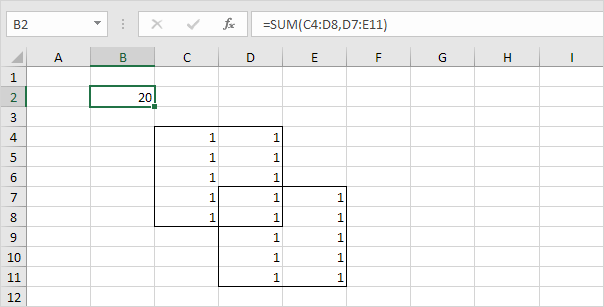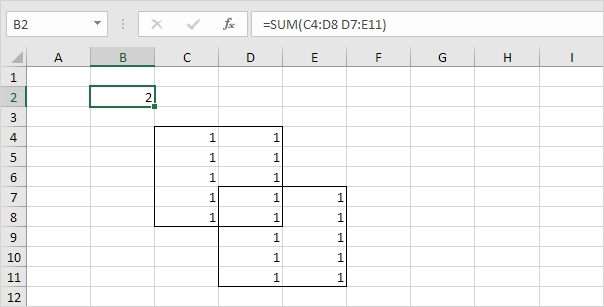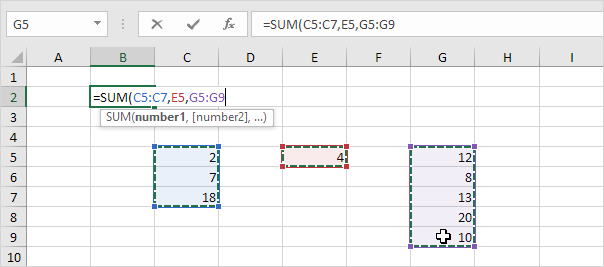Union and Intersect
This example illustrates how to use the union and intersect operator (borders below for illustration only) in Excel.
1. The union operator (comma) adds two ranges.

Explanation: the SUM function reduces to =SUM(C4:D8) + SUM(D7:E11), 20.
2. The intersect operator (single space) returns the intersection of two ranges.

Explanation: the SUM function reduces to =SUM(D7:D8), 2.
Let’s look at a few cool examples.
3. Excel automatically adds union operators (commas). For example, type =SUM( and hold down CTRL to select the ranges below.

Note: press Enter to insert this function. Excel adds the closing parentheses for you.
4. You can use the intersect operator (space) to return the intersection of two named ranges.

Note: the named range Feb refers to the range B3:D3 and the named range Chocolate refers to the range B2:B13.
Next Chapter: Date & Time Functions




